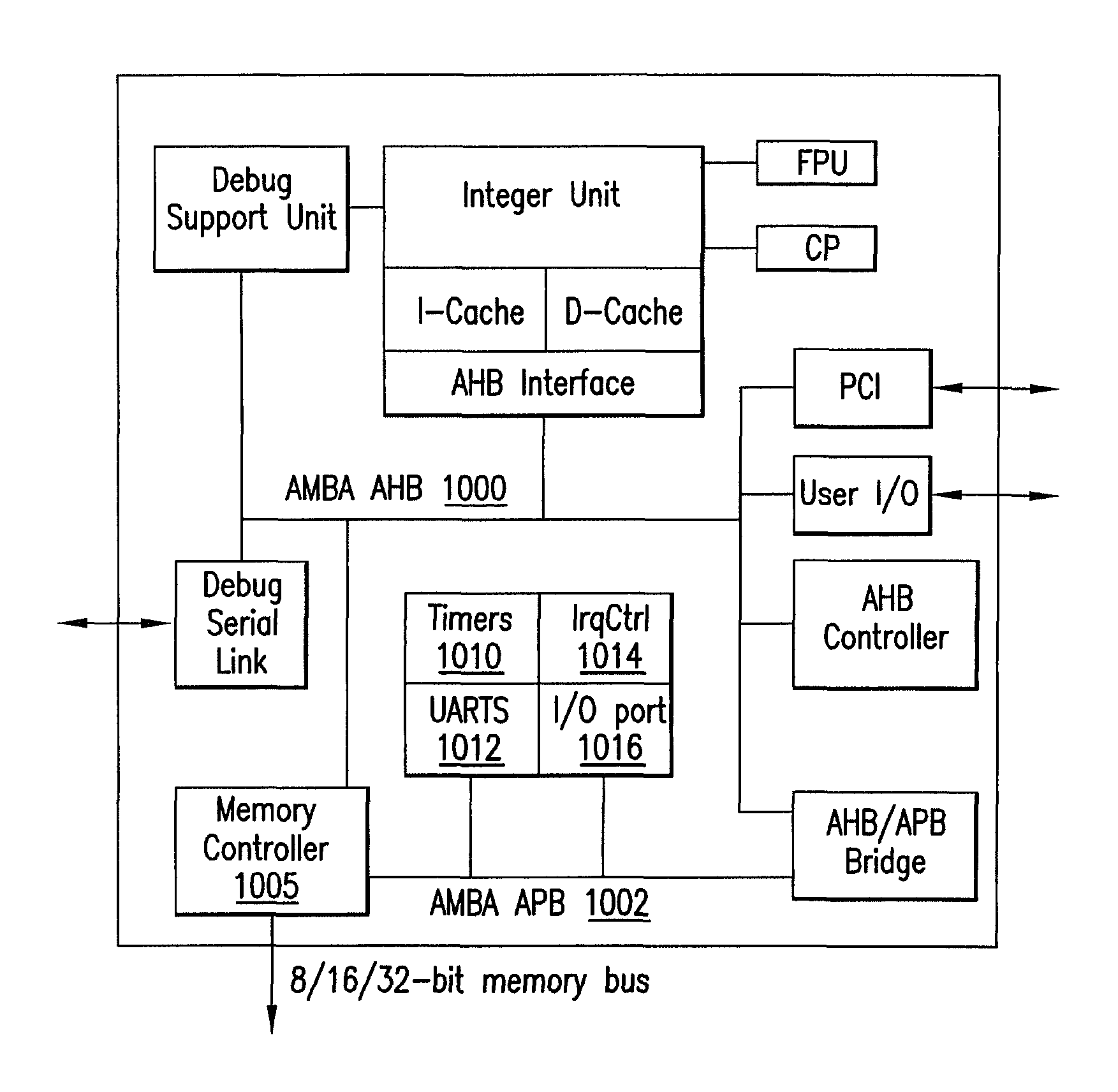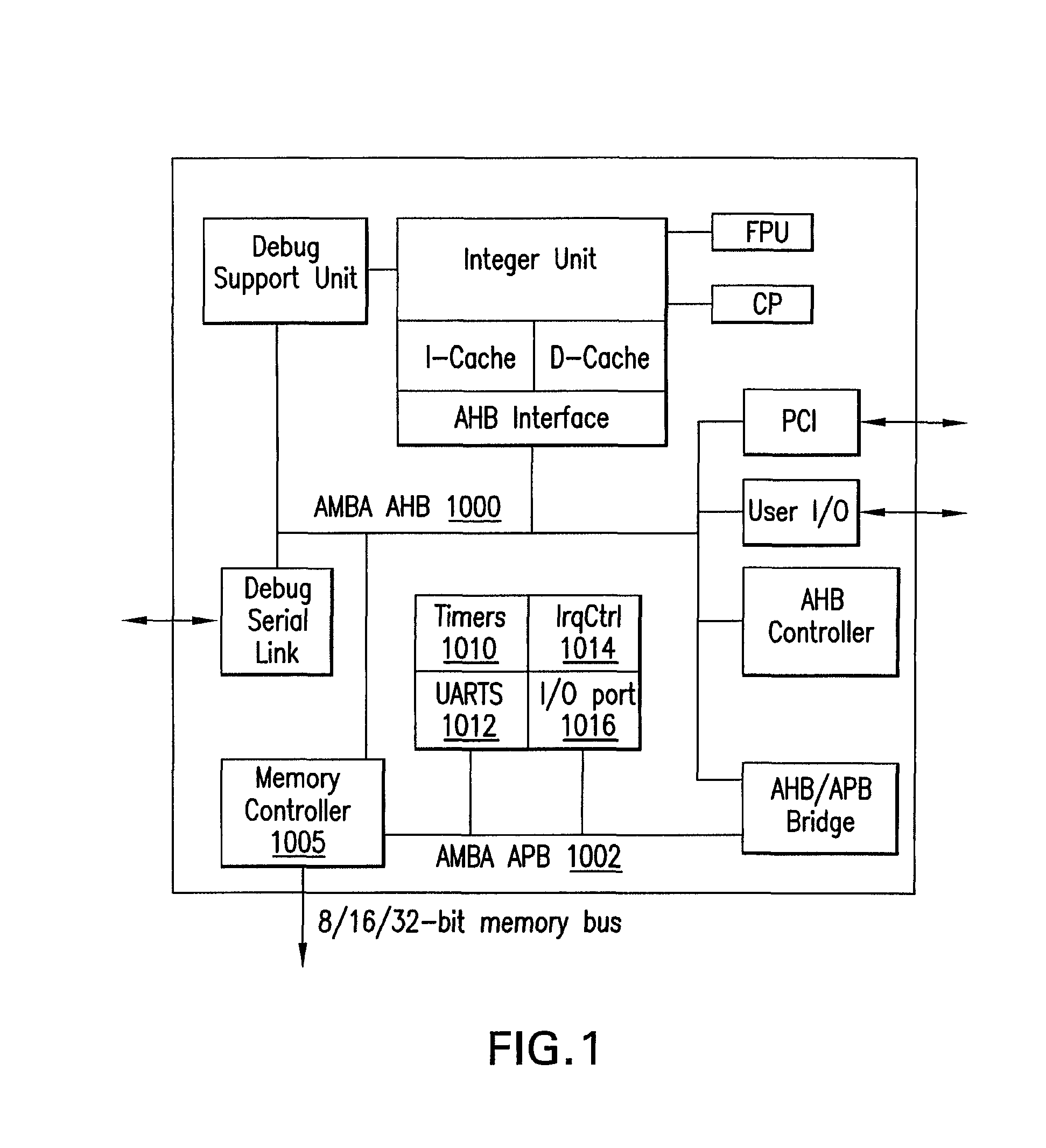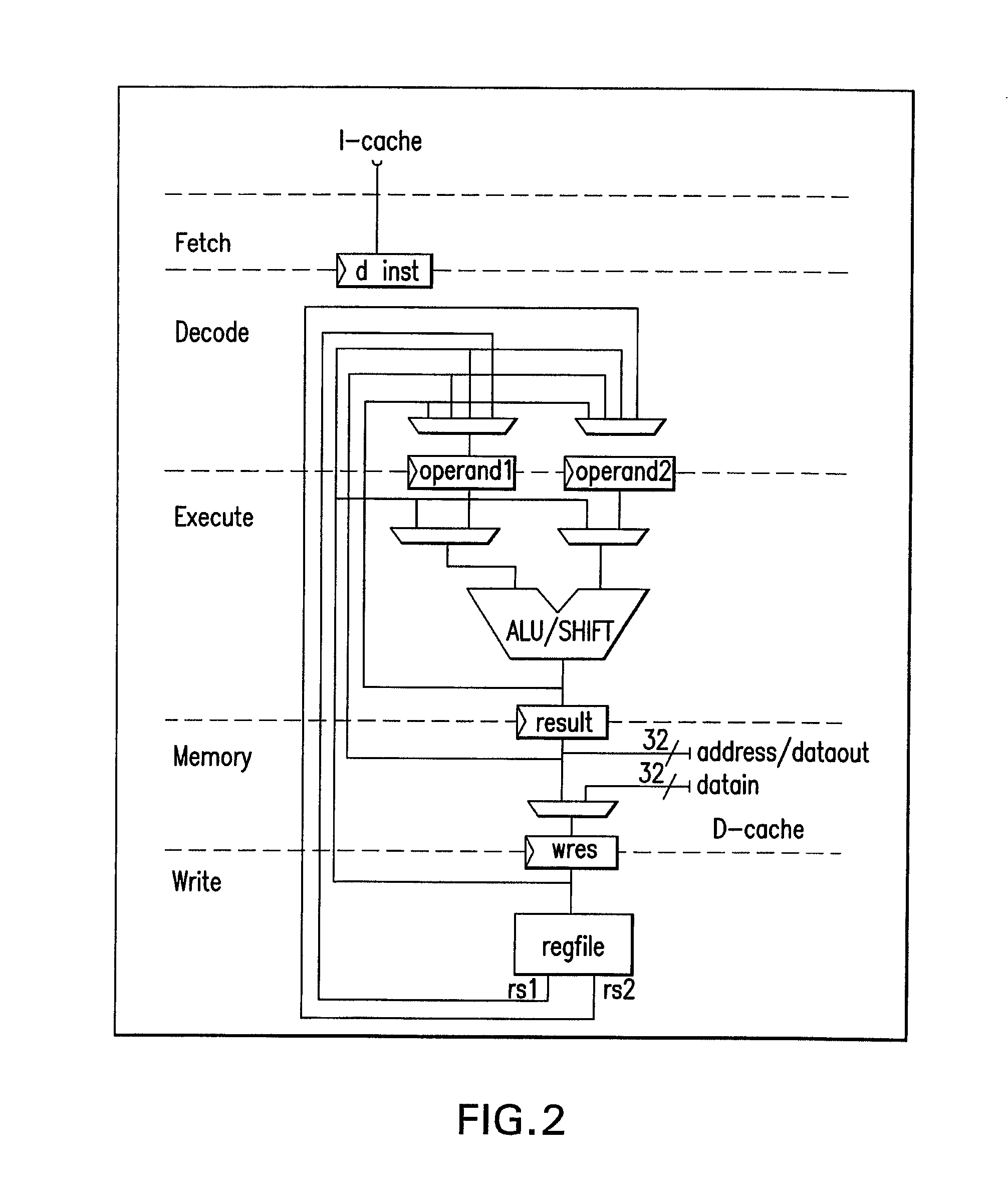Data processing method and device
a data processing and data stream technology, applied in the direction of specific program execution arrangements, program control, memory adressing/allocation/relocation, etc., can solve the problems of data or stream oriented applications that the limit of conventional processors is becoming more and more evident, and the risk and cost of data processing are not well suited to this environment. , to achieve the effect of reducing the memory traffic for interrupt handling, facilitating memory access problems, and increasing data through
- Summary
- Abstract
- Description
- Claims
- Application Information
AI Technical Summary
Benefits of technology
Problems solved by technology
Method used
Image
Examples
Embodiment Construction
Environment
[0085]Instruction datapaths of modern microprocessors are constrained by certain limitations because they use static instruction sets driven by the traditional von Neumann or Harvard architectural principles. These limitations may be avoided via a dynamic reconfigurable processor datapath extension achieved by integrating traditional static datapaths with the coarse-grain dynamic reconfigurable XPP architecture. Therefore, a loosely asynchronous coupling mechanism of the corresponding instruction datapath or datapath units has been developed and integrated onto a CMOS 0.13 μm standard cell technology from UMC. In embodiments of the present invention, the SPARC compatible LEON RISC processor may be used, with its static pipelined instruction datapath extended to be configured and personalized for specific applications. This compiler-compatible instruction set extension allows various and efficient uses, e.g., in streaming application domains like MPEG-4, digital filters, m...
PUM
 Login to View More
Login to View More Abstract
Description
Claims
Application Information
 Login to View More
Login to View More - R&D
- Intellectual Property
- Life Sciences
- Materials
- Tech Scout
- Unparalleled Data Quality
- Higher Quality Content
- 60% Fewer Hallucinations
Browse by: Latest US Patents, China's latest patents, Technical Efficacy Thesaurus, Application Domain, Technology Topic, Popular Technical Reports.
© 2025 PatSnap. All rights reserved.Legal|Privacy policy|Modern Slavery Act Transparency Statement|Sitemap|About US| Contact US: help@patsnap.com



